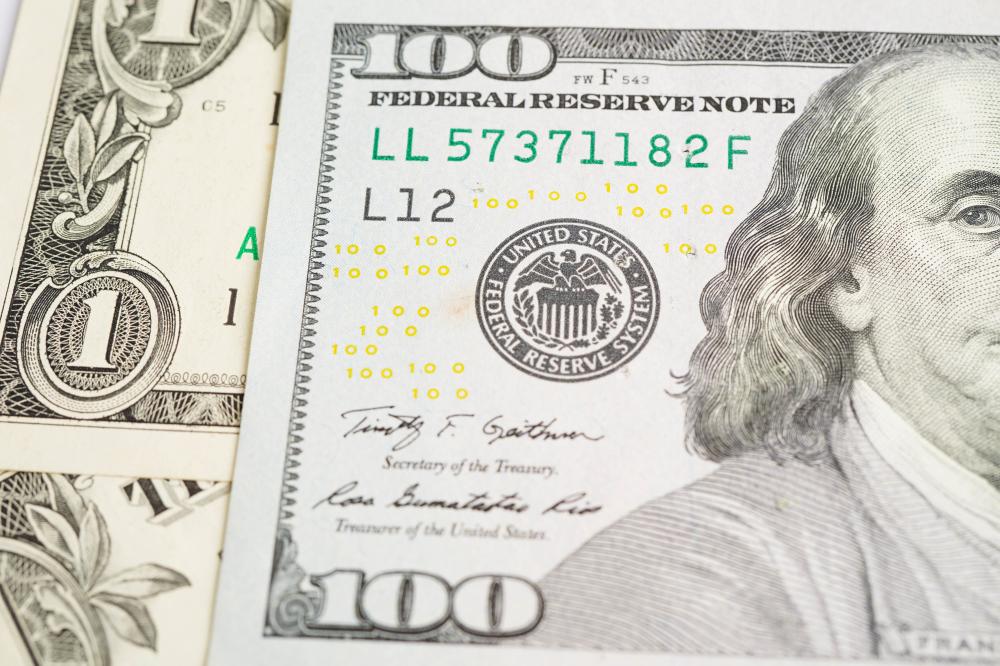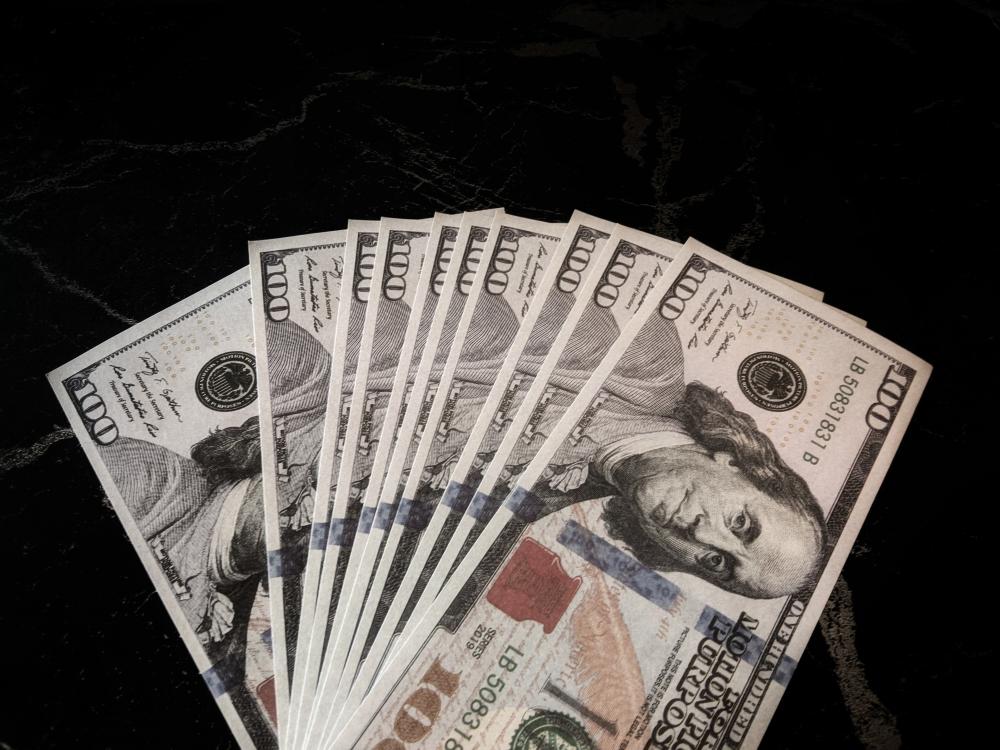
History and Legacy of the 1000 Dollar Bill
The $1000 bill has a storied past, linked to key historical figures and economic shifts. First issued in 1862, these notes featured prominent individuals such as Alexander Hamilton and Grover Cleveland. Despite their discontinuation in 1969, they remain legal tender. Though their primary use was for large transactions between banks, they have since gained popularity as collectibles.
The historical significance of the individuals featured on these bills adds a layer of intrigue. Alexander Hamilton, a founding father and the first Secretary of the Treasury, played a pivotal role in shaping America’s financial system. Similarly, Grover Cleveland’s unique position as the only U.S. President to serve two non-consecutive terms brings distinct recognition to the series bearing his image.
Collectible Value
The collectible value of a $1000 bill often far exceeds its face value. These notes are coveted by collectors for their rarity and historical significance. Factors influencing their value include the issuance year, condition, and unique features such as serial numbers or seal colors.
Collectors have been known to pay premium prices for notes in pristine condition. A $1000 bill from the 1928 series, for instance, might fetch a higher price due to its limited availability. Collectors place significant importance on the note’s rarity, so an uncirculated note from an early series can command tens of thousands of dollars.
To appreciate the full potential value, it’s crucial to seek expert appraisal. The appraiser will evaluate not only the physical condition but also market demand and historical context, ensuring you get an accurate assessment of your bill’s worth.
Grading Your Currency
Grading plays a vital role in determining the value of your $1000 bill. The condition, or grade, can dramatically affect its market value. Generally, currencies are graded as “Very Good,” “Fine to Very Fine,” or “Uncirculated.” An uncirculated bill, free from any folds or creases, often holds the highest potential value.
To gauge your bill’s worth, it’s recommended to consult with professional grading services. These experts can provide a detailed evaluation, factoring in aesthetic appeal and historical significance. A note in “Fine to Very Fine” condition could be valued at $1,800 to $3,500, whereas an uncirculated bill could fetch much more.
Factors Affecting Value
Several factors contribute to a $1000 bill’s worth, each adding a layer of complexity to its valuation. Besides condition, the year of issue and serial number are pivotal. Bills with unique or low serial numbers are particularly desirable among collectors.
Seal variety also influences value. Collectors often seek bills with specific seal colors, such as the rare light green seal. Such distinctions add to the allure and exclusivity of the currency.
The economic climate can also affect market demand for these bills. While their rarity generally ensures demand, shifts in the economy or changes in collector interests can impact value.
Sell $1000 Bill Professionally
At Currency Dealer NYC, we specialize in helping clients sell $1000 bill notes with confidence and convenience. We offer professional appraisals and secure currency exchanges, ensuring you receive a fair and transparent deal. Our team has extensive experience in handling transactions of rare $1000 bills, providing personalized service that prioritizes client satisfaction.
Our clients consistently commend our streamlined process and the expertise we bring to each transaction. For those looking to sell $1000 bill currency, we offer a reliable platform that ensures accurate valuations and timely assistance.
Finally, our commitment to authenticity means that every note goes through a rigorous verification process. This guarantees that our clients receive genuine value for their currency, without the risk of counterfeits.
Personal Experiences in Selling $1000 Bill
Having worked extensively in the rare currency market, we’ve observed the unique stories each $1000 bill carries. One client, for instance, was astonished to learn that a bill passed down through generations had accrued significant value over time. The appraisal revealed a collector’s gem, offering the family a substantial financial windfall.
Another memorable experience involved a collector who discovered a rare serial number, elevating the bill’s worth considerably. With expert guidance, they successfully negotiated a sale well above initial expectations, underscoring the importance of professional evaluation.
Professional Tips for Collectors
For those venturing into currency collection or considering selling, understanding the nuances of the market is crucial. Start by familiarizing yourself with key terms and trends, and stay informed about the latest developments in the world of numismatics.
When you decide to sell your $1000 bill, timing can be everything. Monitoring market conditions and collector interest can help you optimize your transaction, ensuring maximum returns.
Common Misconceptions
One misconception is that a $1000 bill’s value strictly equals its face value. In reality, the bills’ collectible value often far surpasses their nominal worth. The rarity and historical significance play a much larger role in determining their market value.
Similarly, some believe that all $1000 bills hold equal value. However, factors like condition, serial number, and seal variety can lead to significant differences in price among seemingly similar notes. Understanding these distinctions is key to informed buying or selling.
Appraisal and Authentication Services
At Currency Dealer NYC, we understand the importance of authenticity and precision. Our professional appraisers provide detailed evaluations, ensuring that every note is accurately assessed for its historical and market value.
Our appraisal services are designed to offer peace of mind, allowing you to confidently navigate the world of currency collection. Whether you’re selling or expanding your collection, our expert team is ready to guide you through each step of the process.

How much is a $1000 bill worth today?
At Currency Dealer NYC, we place great emphasis on accurately valuing $1000 bills. The worth of a $1000 bill today can vary significantly, primarily depending on factors such as its condition, rarity, and year of issuance. For instance, a $1000 bill that’s in pristine, uncirculated condition could fetch tens of thousands of dollars, especially if it’s from a particularly sought-after series like the 1928 series. We always recommend having your bill appraised by an expert to get a precise valuation, and that’s something we’re more than happy to assist with at our dealership.
How much is a 1934 $100,000 bill worth today?
The 1934 $100,000 bill holds a special place in currency history, as it was never intended for public use but rather for transactions between Federal Reserve Banks. As such, it’s not a collectible that one might sell in the traditional sense. However, its historical significance is immense. In many ways, this bill is considered priceless by collectors, given its rarity and the fact that it was only used within the federal banking system. If you’re interested in rare currency, while you might not possess a $100,000 bill, the history surrounding it is certainly worth exploring.
Is it illegal to own a $1000 bill?
Owning a $1000 bill is completely legal in the United States. Although these bills were taken out of circulation in 1969, they remain legal tender. However, because they’re so valuable as collectibles, it’s generally not practical to use them in everyday transactions. Instead, these bills are considered highly desirable collectibles, often sold for far more than their face value. At Currency Dealer NYC, we specialize in dealing with such rare notes while ensuring that all transactions are conducted smoothly and securely.
What to do with $1,000 dollar bill?
If you have a $1000 bill, the first step is to get it appraised to understand its value. At Currency Dealer NYC, we offer expert appraisals that consider all aspects of the bill, from its condition to its historical context. Once you know the value, you can decide whether to hold onto it as an investment, sell it to a collector, or perhaps expand your collection. If you choose to sell, we offer a seamless transaction process that clients have found both profitable and efficient. Remember, the historical legacy of such a bill can make it a fascinating addition to any collection.
Can market fluctuations impact the value of a $1000 bill?
Indeed, the value of a $1000 bill can be influenced by the broader market conditions. In times of economic uncertainty, collectors may either become more reluctant to part with their cash or more eager to invest in tangible assets like rare currency. This can lead to fluctuations in demand, affecting prices. At Currency Dealer NYC, we stay attuned to these market trends to advise our clients on the best timing to buy or sell. Monitoring these fluctuations can enhance your strategy in managing your currency investments.
Should I consider getting my $1000 bill graded before selling?
Absolutely, getting your $1000 bill professionally graded is a critical step in ensuring you receive the best possible price. Grading provides potential buyers with a verified assessment of your bill’s condition, which is a significant factor in its valuation. At Currency Dealer NYC, we understand the importance of this process and can guide you through it, connecting you with trusted grading experts. A well-graded bill can reassure buyers of its value, possibly leading to a higher sale price and more interest from serious collectors.
Resources
- U.S. Bureau of Engraving and Printing – The official website of the U.S. Bureau of Engraving and Printing, responsible for producing currency notes in the United States.
- American Numismatic Association – The American Numismatic Association is a nonprofit organization dedicated to educating and encouraging the study of coins, currency, and related items.
- Smithsonian Magazine – Smithsonian Magazine covers topics related to history, science, culture, and arts, providing valuable insights into various aspects of collectibles.
